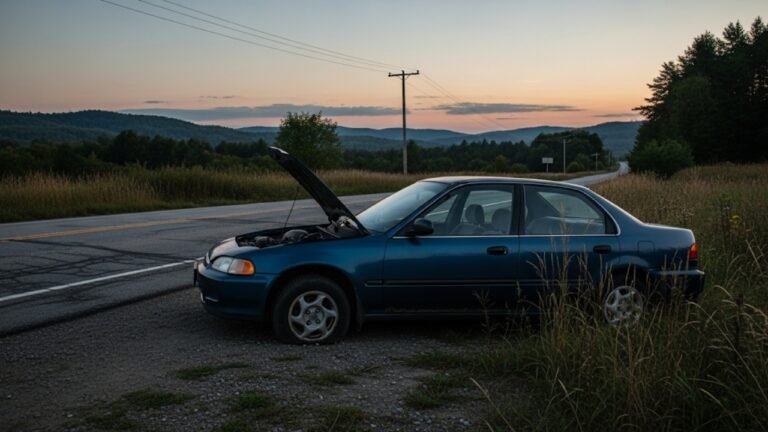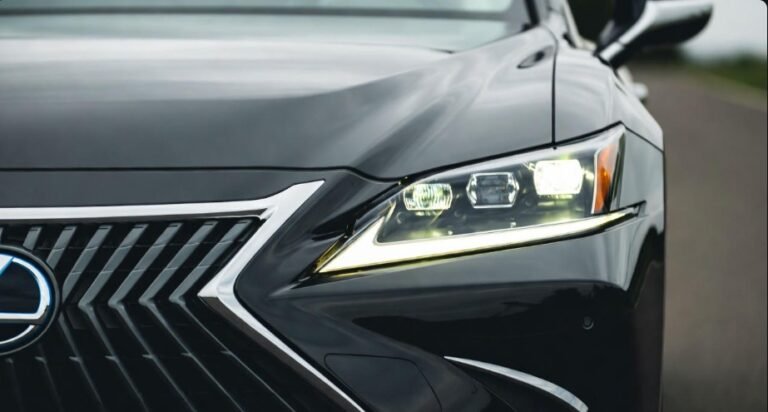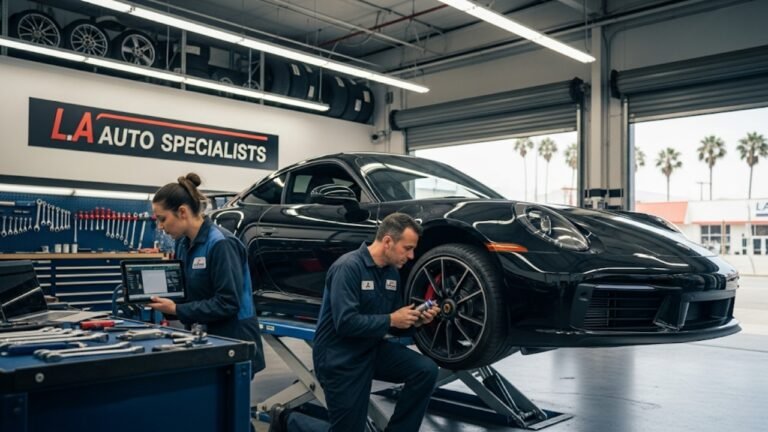Ultimate Guide to Towing a Car on a Dolly: Simple, Safe, and Stress-Free
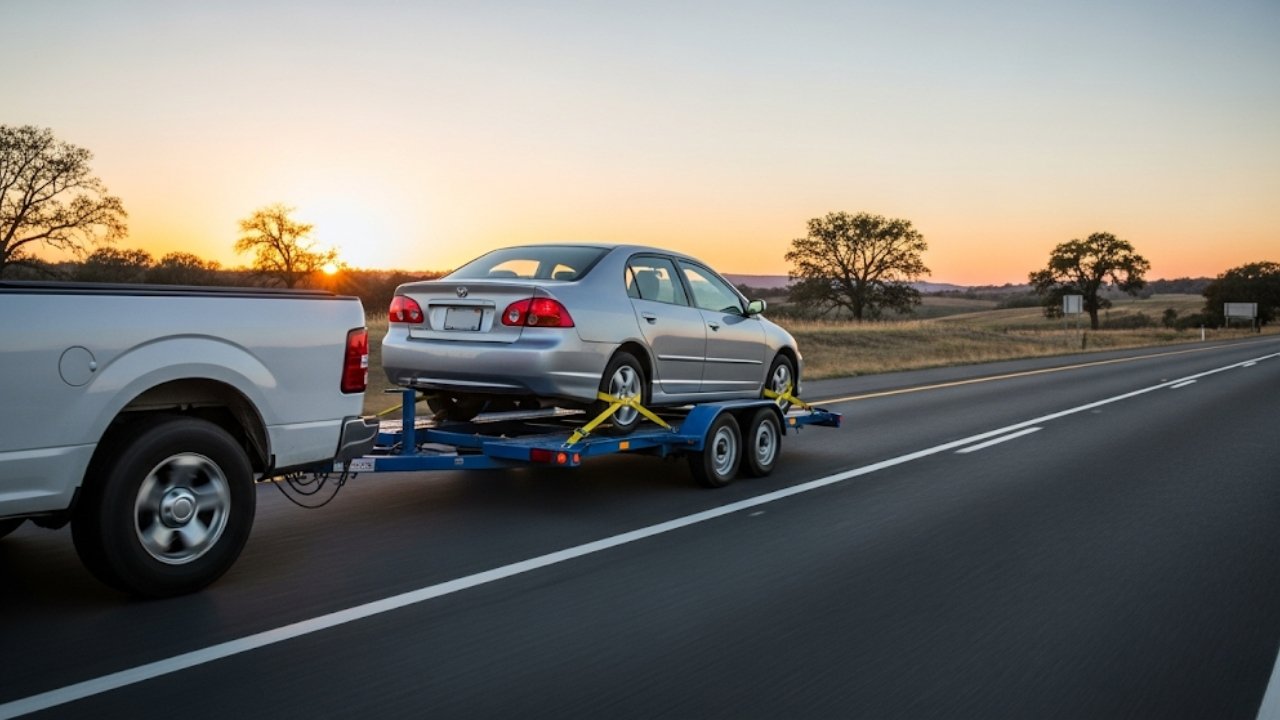
Let me guess—you’ve found yourself in a spot where you need to move a car without actually driving it. Maybe your vehicle broke down in a random town, or you’re taking your RV on an epic road trip across the country. Either way, you’re now considering towing a car on a dolly.
Sounds easy enough, right?
But trust me, there’s a lot more to it than just rolling up and strapping in. When I had to move my old Honda Civic across two states, I thought, “How hard could it be?” Oh boy, that adventure taught me plenty. So, in this friendly, real-talk guide, I’ll walk you through everything—from the nuts and bolts of using a tow dolly to safety tips you wish you knew sooner.
Whether you’re a DIY-er, RV traveler, or just a curious car owner, this is your all-in-one guide to towing a car on dolly without the headache.
What Is a Tow Dolly and How Does It Work?
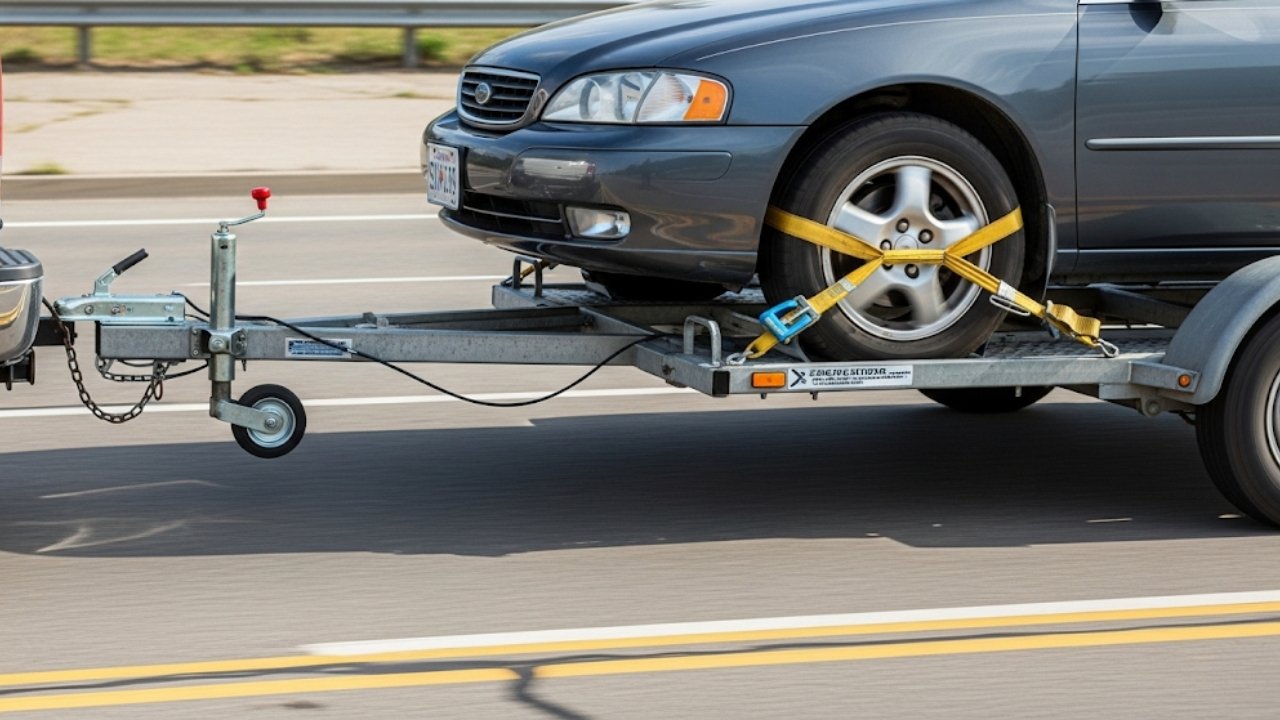
When it comes to towing car on dolly, it’s important to know that only the front wheels of your vehicle are elevated. This makes it great for front-wheel-drive cars because their drive axles are safely off the pavement.
Pro Tip: Rear-wheel or all-wheel drive cars need special treatment. If you try to dolly-tow them without disconnecting the driveshaft, you might end up damaging the transmission.
Here’s how a tow dolly works, step by step:
-
The dolly attaches to the hitch of the towing vehicle.
-
The front wheels of the car being towed are driven up onto the dolly ramps.
-
Ratchet straps secure the front tires to the dolly.
-
Safety chains and lights ensure everything’s legal and visible.
It’s basically a piggyback ride for your car. Simple, yet brilliant.
Why People Choose to Tow Their Car on a Dolly
You might wonder: why not flat tow or use a full trailer instead? Well, there are solid reasons folks go with towing car on dolly instead.
Here are a few:
-
Cost-Effective: Dollies are cheaper to rent or buy than full car haulers.
-
Lightweight: Easier on gas mileage than pulling a full trailer.
-
Compact: Takes up less space when storing or parking.
-
Perfect for RVers: Many RV owners use dollies to take their car along for the ride.
And let me be real—when I rented a dolly instead of a full trailer, my wallet definitely thanked me. Plus, driving with a dolly just felt lighter. Less stressful on hills or winding roads.
Still, towing car on dolly isn’t perfect. You’ve got to deal with:
-
Parking challenges (you can’t reverse easily)
-
Potential damage to rear-wheel-drive vehicles
-
Getting your car aligned just right on the dolly
But if you’re towing a front-wheel-drive car for short to mid-range distances? It’s a solid choice.
How to Properly Set Up for Towing a Car on Dolly
Setting up a dolly isn’t hard—but skipping steps is a recipe for disaster. I’ve seen cars come loose on the highway because people thought they could just “wing it.” Don’t be that person.
Here’s a foolproof setup checklist:
-
Check the hitch: Make sure the dolly is tightly secured to the tow vehicle.
-
Inspect the dolly: Check tire pressure, wheel bearings, and lights.
-
Align the car: Line it up as straight as possible before loading.
-
Drive up slowly: Let the front wheels roll up onto the dolly ramps.
-
Strap the tires: Use heavy-duty ratchet straps on both front tires.
-
Double up on safety: Use chains and a breakaway cable system.
-
Light check: Plug in the light harness and confirm brake lights work.
-
Do a walk-around: Look at everything. Twice.
Quick Fix Tip: Carry zip ties, duct tape, and a flashlight. You’d be surprised how often you’ll need one of those on the road.
Trust me, the 10 minutes it takes to do a final walk-around is worth avoiding a call to roadside assistance.
Choosing the Right Dolly for Your Vehicle
Let’s talk shopping—because not all dollies are created equal.
When it comes to towing car on dolly, getting the right one for your car size and towing vehicle is key. Renting the wrong size? Bad idea. It can make turns harder and even damage your suspension.
Consider these before renting or buying:
| Feature | What to Look For | Why It Matters |
|---|---|---|
| Weight capacity | Check your car’s curb weight | Avoid overloading the dolly |
| Width of the dolly | Ensure it fits your car’s tire width | Prevent tire or body damage |
| Brake system | Electric or surge brakes recommended | Safer stopping on hills |
| Tilt-bed or ramp style | Easier loading with tilt-bed | Less hassle during setup |
| DOT-approved lighting | Built-in tail/brake/turn lights | Legal and safe for night towing |
I once tried to tow a friend’s older Ford Crown Victoria on a dolly made for compacts. It was a total nightmare—wheels barely fit, and I spent more time strapping than driving.
Is Towing a Car on Dolly Safe? What You Need to Know
Short answer? Yes—towing a car on dolly can be very safe. But only if done right.
Here’s what I’ve learned after multiple trips towing cars:
-
Balance is everything. Keep the weight centered on the dolly.
-
Don’t speed. Most manufacturers recommend a max of 55–65 mph.
-
Check every 50 miles. Straps can loosen from road vibration.
-
Stay in the right lane. Avoid weaving through traffic.
-
Use extended mirrors. Seeing around the car gives peace of mind.
One time, while heading through the Rockies, a strap slipped. Luckily, I had checked it 10 minutes before and fixed it in a gas station parking lot. Always double-check!
So, while towing car on dolly isn’t rocket science, it’s not something you want to take lightly either.
Pros and Cons of Towing Car on Dolly
Let’s lay it all out—the good, the bad, and the annoying.
✔️ Pros:
-
Lower cost than flatbed towing
-
Less weight than full trailer towing
-
Ideal for front-wheel-drive vehicles
-
Easy hookup (compared to flat towing gear)
❌ Cons:
-
Not suitable for all-wheel/rear-wheel-drive without modification
-
Can’t reverse easily
-
Exposure to weather and road debris
-
Potential wear on rear tires and alignment
It’s kind of like using a bike rack for your car—it gets the job done, but you still have to ride smart.
Common Mistakes People Make When Towing a Car on a Dolly
Even smart people mess this up. I’ve seen it all—cars dragging bumpers, smoke from locked wheels, and straps flapping in the wind like spaghetti. So let’s break down the most common “uh-ohs” you should avoid when towing car on dolly.
❌ Mistake 1: Towing the Wrong Type of Car
This one’s huge. Rear-wheel-drive or all-wheel-drive cars can get wrecked if towed with their drive wheels on the ground. That’s like running a treadmill in reverse—it’ll destroy your transmission. Always check the owner’s manual.
❌ Mistake 2: Loose or Misaligned Straps
If the straps aren’t tight or are twisted, they’ll loosen on the road. That’s when cars start to shift. Not good. Ratchet down until the tires look squished—tight but not bursting.
❌ Mistake 3: Not Checking Tire Pressure
Dolly tires matter just as much as your own car’s. Under-inflated tires can blow out under load. I check mine every 200 miles. It’s a 5-minute task that can save you hours of waiting for roadside help.
❌ Mistake 4: Skipping Safety Chains
If the dolly hitch fails—and yes, it happens—safety chains are your lifeline. Never skip them. Ever.
❌ Mistake 5: Trying to Reverse
You can’t reverse while towing car on dolly. It’ll jackknife immediately. If you need to back up, you have to unhook the dolly first. It’s annoying but necessary.
Laws and Legal Stuff You Should Know
Ah yes, the fun part: legalities. Unfortunately, every state has its own set of rules when it comes to towing car on dolly. That said, here are some universal things to keep in mind:
-
Lights are mandatory. Your dolly must have working brake lights, turn signals, and reflectors.
-
License plates. Some states require the dolly to be registered and plated.
-
Brakes. If your dolly or vehicle exceeds certain weights, brakes are a must. Surge brakes or electric brakes are most common.
-
Breakaway system. Some states require this to stop the towed car if the dolly detaches.
Quick Table of Dolly Brake Laws (select U.S. states):
| State | Brake Required Over (lbs) | Breakaway Required? |
|---|---|---|
| California | 1,500 | Yes |
| Florida | 3,000 | Yes |
| Texas | 4,500 | No |
| Washington | 3,000 | Yes |
| New York | 1,000 | Yes |
Tip: Check your DMV’s website before your trip. Laws change, and fines are no joke.
Towing Car on Dolly During Long Road Trips: What to Expect
Let’s talk long-distance. If you’re towing cross-country, the experience is a mix of fun, stress, and surprise rest stops.
When I moved from Arizona to Oregon, I towed my Toyota Corolla on a dolly behind a rented U-Haul truck. Here’s what I learned:
-
Fuel Economy Drops: My 12 mpg truck turned into 9 mpg.
-
Wind Can Be Brutal: Gusts hit harder when towing. Keep both hands on the wheel.
-
You Feel Every Bump: Especially on older dollies with stiff suspensions.
-
Rest Stops are Tricky: Park where you can exit forward—reversing is off-limits.
Still, if you prep well and stay alert, towing car on dolly across states is totally doable—even kind of fun in a road trip kind of way.
Alternatives to Towing a Car on Dolly
Sometimes, a dolly isn’t the best choice. Depending on your vehicle or situation, these options might be better:
Flatbed Trailer
Great for any drivetrain, especially AWD and RWD. Offers full support, zero wear on tires. Downsides? Heavy, expensive, harder to store.
Flat Towing (Four Wheels Down)
Popular with RVers. Uses a special tow bar system. No dolly needed, but only works with select vehicles (mainly manual transmissions or those with transfer cases).
Professional Auto Transport
Call the pros. Ideal if you don’t want the hassle. Costs more, but it’s hands-free and often insured.
So, should you use a dolly? Ask yourself:
-
Is my car front-wheel-drive?
-
Am I towing for less than 1,000 miles?
-
Can I load and strap it myself?
If yes, towing car on dolly might be your perfect match.
Real Stories: What It’s Actually Like Towing a Car on a Dolly
Here’s where it gets personal. Some real-life tales from people like you and me.
✨ Emma from Denver:
“We towed our Prius behind the RV during a road trip to Yellowstone. Easy setup, smooth ride. Only thing I’d do differently? Bring a backup set of straps. One of ours snapped in Utah.”
✨ Dave from Atlanta:
“I tried towing my Mustang (rear-wheel drive) on a dolly… big mistake. Smelled burning 10 miles in. Ended up needing a flatbed. Lesson learned—know your drivetrain!”
✨ Carla from San Diego:
“We moved across the state and used a dolly to tow our Honda CR-V. I was nervous, but after a few YouTube videos and a checklist, it was honestly kind of fun.”
There’s something empowering about learning how to tow your own car. Once you’ve done it, you feel like a road warrior.
Frequently Asked Questions (FAQs)
❓ 1. Can I tow an automatic car on a dolly?
Yes, but only if it’s front-wheel-drive. Rear-wheel or AWD automatics can suffer transmission damage unless you disconnect the driveshaft.
❓ 2. Is it legal to tow a car on a dolly?
Yes, but laws vary by state. Check lighting, brake, and registration requirements before towing.
❓ 3. Can I tow a car backward on a dolly?
Never. This puts the drive wheels on the road, which can seriously damage the drivetrain.
❓ 4. How fast can I drive while towing a car on a dolly?
Most manufacturers recommend a maximum speed of 55–65 mph. Going faster risks sway, tire blowouts, and poor braking.
❓ 5. Does a tow dolly require brakes?
Some do, depending on the weight of the towed car. Electric or surge brakes improve safety, especially on hills.
❓ 6. Can I reverse while towing a car on a dolly?
No. The dolly and car can jackknife instantly. Always plan your parking so you don’t need to reverse.
❓ 7. Will a dolly damage my car?
If used correctly—no. But improper loading or towing the wrong drivetrain can cause tire, bumper, or transmission issues.
❓ 8. Is towing with a dolly hard to learn?
It takes practice, but it’s not hard. Watch a few videos, go slow, and double-check your setup. You’ll be fine.
Final Thoughts: Is Towing Car on Dolly Right for You?
So, we’ve covered everything—the pros, the cons, the setups, the horror stories, and the tips.
Here’s the deal:
If you’ve got a front-wheel-drive car, don’t want to pay for a full trailer, and feel confident strapping things down yourself—towing car on dolly is a solid, budget-friendly choice.
But do it the smart way:
-
Check your car’s drivetrain
-
Use quality straps and safety chains
-
Drive slow and steady
-
Never reverse
Personally, I’ve towed cars on dollies multiple times now, and each time it’s been smoother than the last. The first time might feel overwhelming—but once you get it right, it becomes a powerful skill you’ll always be glad to have.
Whether you’re hitting the road for a cross-country move or just hauling your car to the mechanic, I hope this guide makes your journey smoother, safer, and way less stressful.

